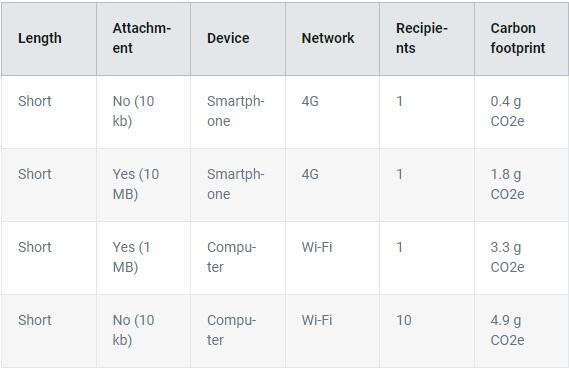In a world heavily reliant on digital communication, a staggering 231 million emails were sent every minute in 2022, contributing to a significant 70 million grams of carbon.
According to research conducted by sweep.io, in the last ten years, digital engagement through social media, online purchases, streaming sites, and other online activities has increased exponentially.
The transmission of emails across the internet necessitates the operation of network infrastructure and servers, which consume substantial amounts of energy and includes the transfer and routing of emails.
This also includes senders and recipient devices collectively contributing to the carbon footprint associated with email communication.
The study estimates that the total carbon emissions resulting from the vast number of emails sent in 2022 exceeded 70 million grams.
Driving a car for 1 kilometer is roughly equivalent to sending 65 emails in terms of carbon emissions. In a year, the average person in the developed world contributes approximately 136 kilograms of CO2 to their carbon footprint through their email activities.
This amount is comparable to driving an additional 320 kilometers in a car. On a global scale, the collective email usage worldwide produces as much CO2 as having an additional seven million cars on the roads.
Over the course of a year, a person’s average email usage varies between 3 to 40kgs CO2e, which is the equivalent of driving between 16 to 205 kilometers in a small petrol car.
According to Berners Lee’s book, The Carbon Footprint of Everything, a normal email has a footprint equivalent to 0.3 g of CO2 emissions.
With the addition of a large attachment this can rise to 50g, however, this figure looks at everything from the power in data centres to the computers that send, filter and read the messages.
Berners-Lee said, “Whilst the carbon footprint of an email isn’t huge it’s a great illustration of the broader principle that cutting out the waste in our lives is good for our wellbeing and good for the environment.”
Statista estimates that more than 306 billion emails were sent in 2021 and that is expected to top 376 billion in 2025. While each one may seem fairly innocuous, the collective impact of billions of emails can soon add up.
Although emails may not present a significant issue individually, they are integral components of a rapidly expanding digital infrastructure, which in turn generates an increasing amount of carbon emissions.
According to a report from the Financial Times, the collective carbon footprint of data servers hosting our emails has surpassed the emissions generated by pre-Covid air travel. The majority of these emissions stem from the substantial energy consumption of these servers.
Considering that merely 5% of the global power grid relies on renewable sources, it becomes evident that the majority of our email communications are fueled by non-renewable fossil fuels.
A study conducted by the French researcher Basile Fighiera shows that an email with a 1MB document attached, sent using Wi-Fi, will emit 3.3 g CO2e. A short message without attachments sent to 10 recipients will emit 4.9 g CO2e.

Email Spam & CO2
A prominent issue regarding the environmental impact of emails revolves around spam. Not only do spam emails inconvenience individuals, but they also contribute to energy wastage.
The act of sending, receiving, and even inadvertently storing spam emails consumes energy so considering the sheer volume of spam messages generated worldwide, one can only imagine the significant energy waste caused by spammers.
Fortunately, the implementation of spam filters plays a crucial role in curbing the carbon footprint associated with unsolicited messages and can help reduce the CO2e emissions linked to spam emails to approximately 0.3 grams.
As the world becomes increasingly data-driven, it is said that the amount of time, data, and information in the digital universe doubles every two years on average. It’s hoped that individuals, businesses, and technology providers will take collective responsibility for reducing the carbon emissions associated with email traffic







